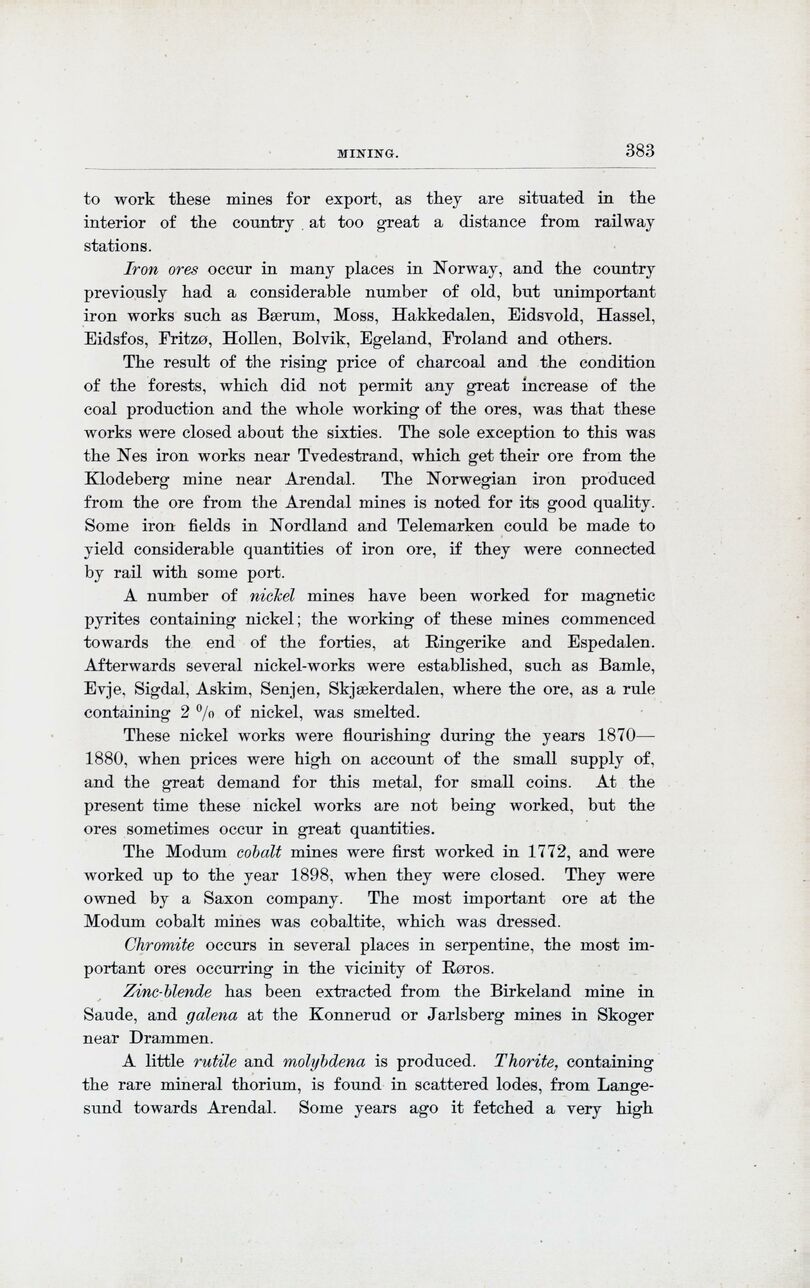
Full resolution (JPEG) - On this page / på denna sida - Mining

<< prev. page << föreg. sida << >> nästa sida >> next page >>
Below is the raw OCR text
from the above scanned image.
Do you see an error? Proofread the page now!
Här nedan syns maskintolkade texten från faksimilbilden ovan.
Ser du något fel? Korrekturläs sidan nu!
This page has been proofread at least once.
(diff)
(history)
Denna sida har korrekturlästs minst en gång.
(skillnad)
(historik)
to work these mines for export, as they are situated in the
interior of the country at too great a distance from railway
stations.
Iron ores occur in many places in Norway, and the country
previously had a considerable number of old, but unimportant
iron works such as Bærum, Moss, Hakkedalen, Eidsvold, Hassel,
Eidsfos, Fritzø, Hollen, Bolvik, Egeland, Froland and others.
The result of the rising price of charcoal and the condition
of the forests, which did not permit any great increase of the
coal production and the whole working of the ores, was that these
works were closed about the sixties. The sole exception to this was
the Nes iron works near Tvedestrand, which get their ore from the
Klodeberg mine near Arendal. The Norwegian iron produced
from the ore from the Arendal mines is noted for its good quality.
Some iron fields in Nordland and Telemarken could be made to
yield considerable quantities of iron ore, if they were connected
by rail with some port.
A number of nickel mines have been worked for magnetic
pyrites containing nickel; the working of these mines commenced
towards the end of the forties, at Ringerike and Espedalen.
Afterwards several nickel-works were established, such as Bamle,
Evje, Sigdal, Askim, Senjen, Skjækerdalen, where the ore, as a rule
containing 2 % of nickel, was smelted.
These nickel works were flourishing during the years
1870—1880, when prices were high on account of the small supply of,
and the great demand for this metal, for small coins. At the
present time these nickel works are not being worked, but the
ores sometimes occur in great quantities.
The Modum cobalt mines were first worked in 1772, and were
worked up to the year 1898, when they were closed. They were
owned by a Saxon company. The most important ore at the
Modum cobalt mines was cobaltite, which was dressed.
Chromite occurs in several places in serpentine, the most
important ores occurring in the vicinity of Røros.
Zinc-blende has been extracted from the Birkeland mine in
Saude, and galena at the Konnerud or Jarlsberg mines in Skoger
near Drammen.
A little rutile and molybdena is produced. Thorite, containing
the rare mineral thorium, is found in scattered lodes, from
Langesund towards Arendal. Some years ago it fetched a very high
<< prev. page << föreg. sida << >> nästa sida >> next page >>